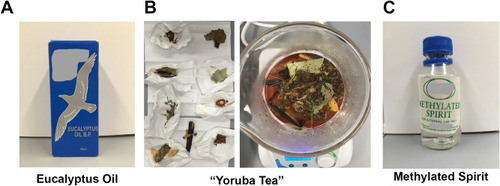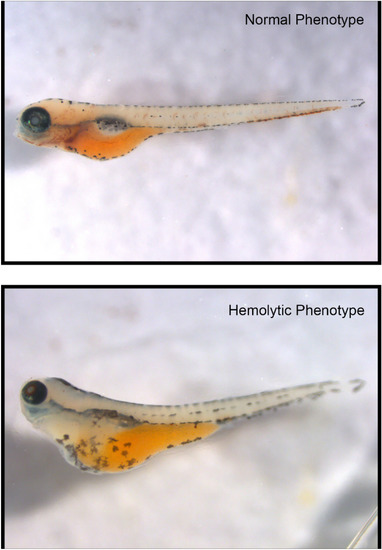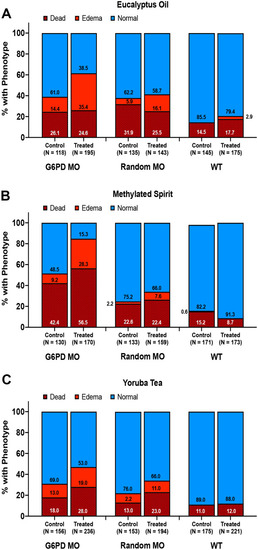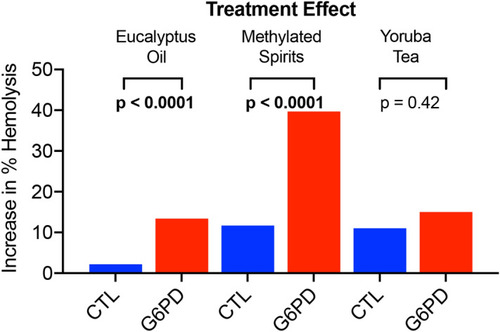- Title
-
Traditional African remedies induce hemolysis in a glucose-6-phopshate dehydrogenase deficient zebrafish model
- Authors
- Arogbokun, O., Shevik, M., Slusher, T., Farouk, Z., Elfstrum, A., Weber, J., Cusick, S.E., Lund, T.
- Source
- Full text @ Sci. Rep.
|
Compound tested in the G6PD-deficient zebrafish model. ( |
|
Hemolysis in a G6PD-deficient zebrafish model. Top micrograph shows a zebrafish at 72 hpf with intact red blood cells. Bottom micrograph shows an edematous G6PD-deficient zebrafish at 72 hpf after 48 h of methylated spirit exposure. Both animals were subject to o-dianisidine staining to show hemoglobin containing red cells. Zebrafish were imaged using a Leica DFC340FX fluorescent microscope with PlanAPO 1.6×/0.05 NA objective. Image capture was performed with Leica Application Suite X 3.6.0.2010 ( PHENOTYPE:
|
|
Enumeration of the hemolytic phenotype in G6PD-deficient zebrafish after compound exposure. ( PHENOTYPE:
|
|
Treatment effect of compounds on G6PD-deficient zebrafish. Tallies were normalized to phenotype data produced in the unexposed embryos to produce a treatment effect. Random MO and G6PD MO injected animals were compared using multivariate analysis was used to separate effects from morpholino exposure versus compound exposure. |




